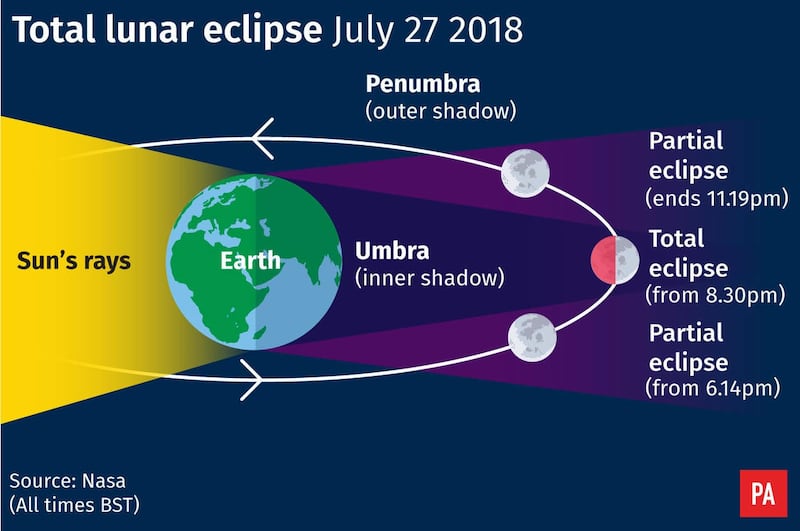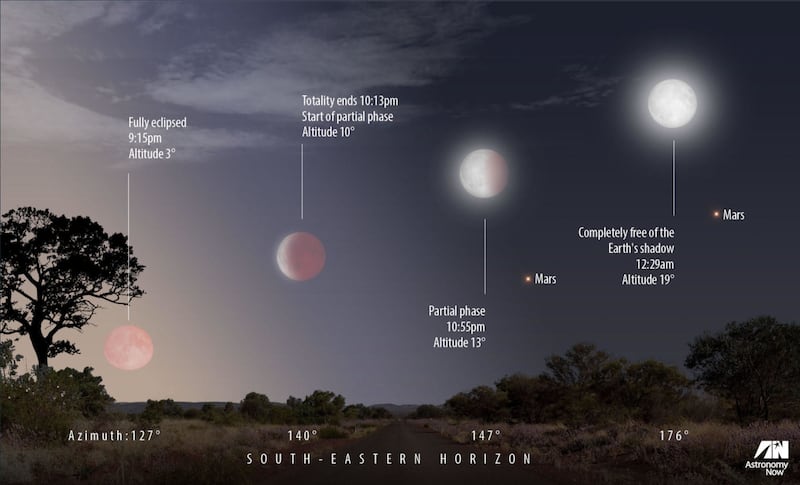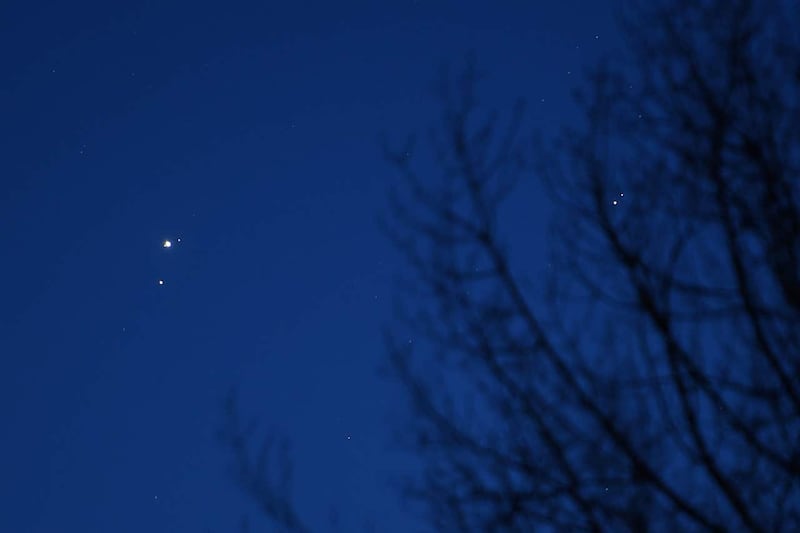A rare total lunar eclipse – expected to be the longest in the 21st century – is set to take place on Friday that will see the Earth’s natural satellite turn blood red.
The celestial event, where the moon will line up with the Earth and the sun, will be seen across the UK and other parts of the Eastern hemisphere.
During the eclipse, the moon will pass through Earth’s darkest shadow and take on a red sheen, with the phenomenon being described as the “blood moon”.
Here’s why it is worth taking the time to witness the event:
1. It is going to be the longest eclipse of the 21st century

Although it is expected to last 103 minutes, those in the UK and Ireland will not be able to see the start of the lunar eclipse as the moon will still be below the horizon.
However, the partial eclipse will be visible for almost four hours.
Dr Gregory Brown, of the Royal Observatory Greenwich, said: “We miss a section of the eclipse due to the moon being below our horizon when it starts. South-eastern observers will be able to see the eclipse for somewhat longer than north-western ones.
“The eclipse will already be underway when the moon rises above the south eastern horizon at about 8.50pm and the total eclipse will end by about 10.15pm.
“From that point onwards, the shadow of the Earth will slowly retreat across the lunar surface until the partial eclipse comes to completion.
“The moon will remain in a very faint penumbral shadow for about an hour after that, but this is typically too light a shadow for the naked eye to notice the difference between that and the full moon that follows.”
2. The moon will turn a deep red colour

During the eclipse, the moon will pass through the umbra – the darkest part of the Earth’s shadow – and take on a red glow.
Dr Brown said: “The UK will be treated to a rare total lunar eclipse, also known as the ‘blood moon’.
“At this time, the moon passes into the shadow of the Earth, blocking the light from the sun.
“However instead of turning black as you might expect, the atmosphere of the Earth bends the light of the sun onto the moon causing it to turn a deep red colour, hence this event’s somewhat ominous moniker.
“While more common than the solar eclipse, the event is nonetheless fairly unusual, with even partial eclipses rarely happening more than once or twice per year and each is only visible from a portion of the Earth.”
3. Mars will shine bright in the night sky

Mars will add to the spectacle shining brightly below the blood moon as it reaches perihelic opposition – where the Red Planet and the sun are on directly opposite sides of Earth.
The last time Mars was bigger and brighter than this was in 2003, when it was less than 56 million kilometres away from Earth.
Dr Edward Bloomer, also an astronomer at the Royal Observatory Greenwich, said: “Although Mars being in opposition is a regular event, the elliptical orbits of the planets mean the distance between them can vary quite a bit.
“On the 27th July, Mars will be at its closest to the Earth, with the moment of opposition itself being in the early morning, although here in the UK we’ll have to wait until nighttime.
“It will appear as a bright reddish star, and even if the opposition brightness won’t be quite as good for the next few years, it won’t make much difference at all to any naked-eye observations.”
4. Other objects will also be visible

Although not as distinct as Mars, other planets will also make an appearance in the night sky.
Mercury, Venus, Jupiter and Saturn will also be visible to eagle-eyed skygazers.
And those awake after 11pm will be able to catch a glimpse of the International Space Station (ISS), as it moves quickly across the sky from west to east.
It will appear like a bright star, before fading from sight a few minutes later.
Robin Scagell, vice-president of the Society for Popular Astronomy, said: “It’s a bright white star-like object but it doesn’t twinkle and it’s really unmistakable.”
5. Expect an eerie spectacle

While most are familiar with the scientific explanation, the phenomenon would have struck terror into our ancestors.
Mr Scagell said: “You may see this very eerie-looking deep-red moon rising.
“In early days experiencing a total lunar eclipse would have felt like the end of the world. It’s not surprising people were terrified by it.”
Unlike a solar eclipse, the lunar event can be viewed without wearing protective eye gear.
Dr Brown added: “As the entire eclipse will occur when the moon is fairly close to the horizon, the main thing to ensure is that you have a clear sightline to the south east.
“Try to find an open space or high hilltop clear of trees and tall buildings around you.”
Like what you've read? Why not sign up to our daily newsletters at www.irishnews.com/newsletter








